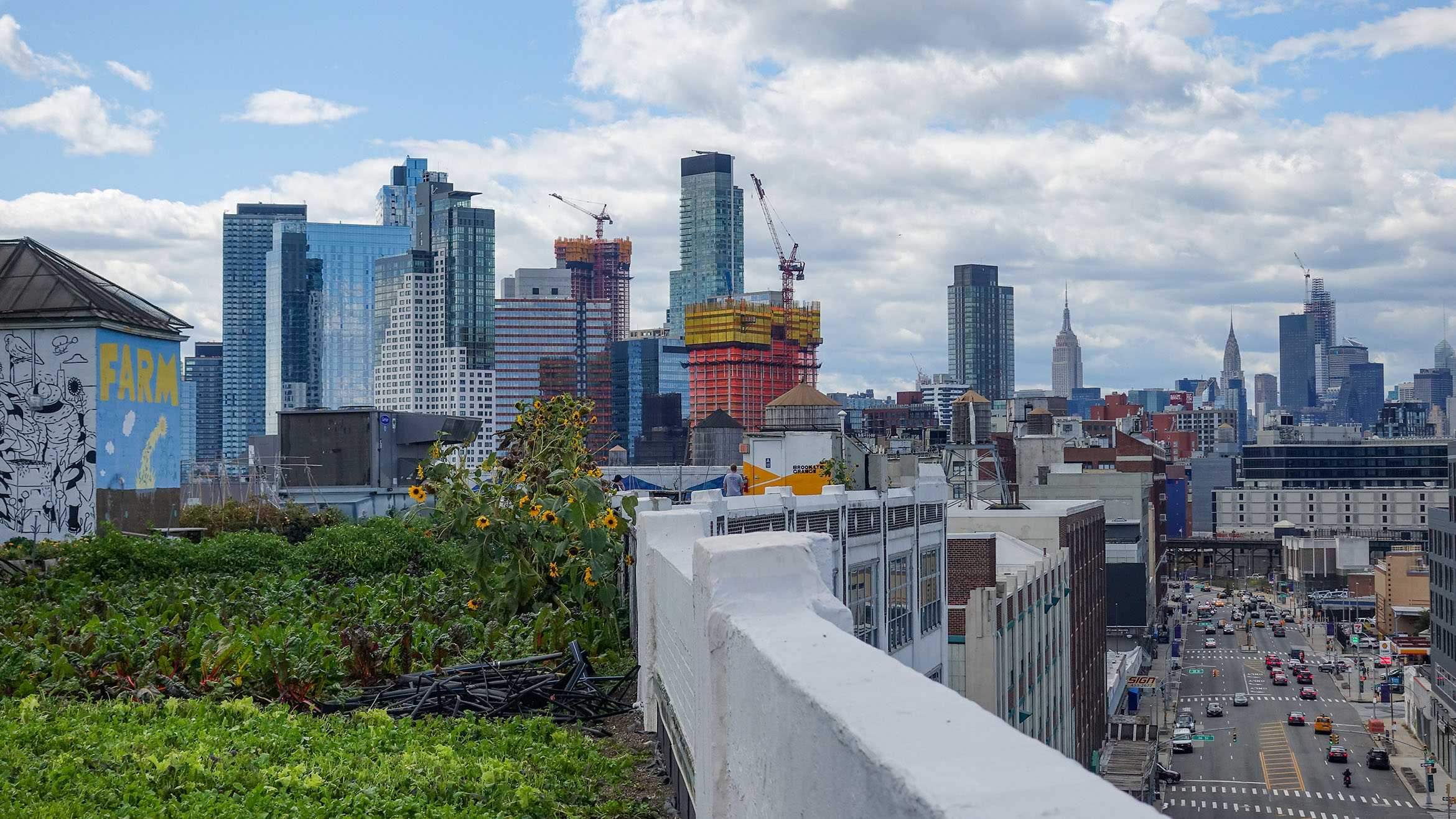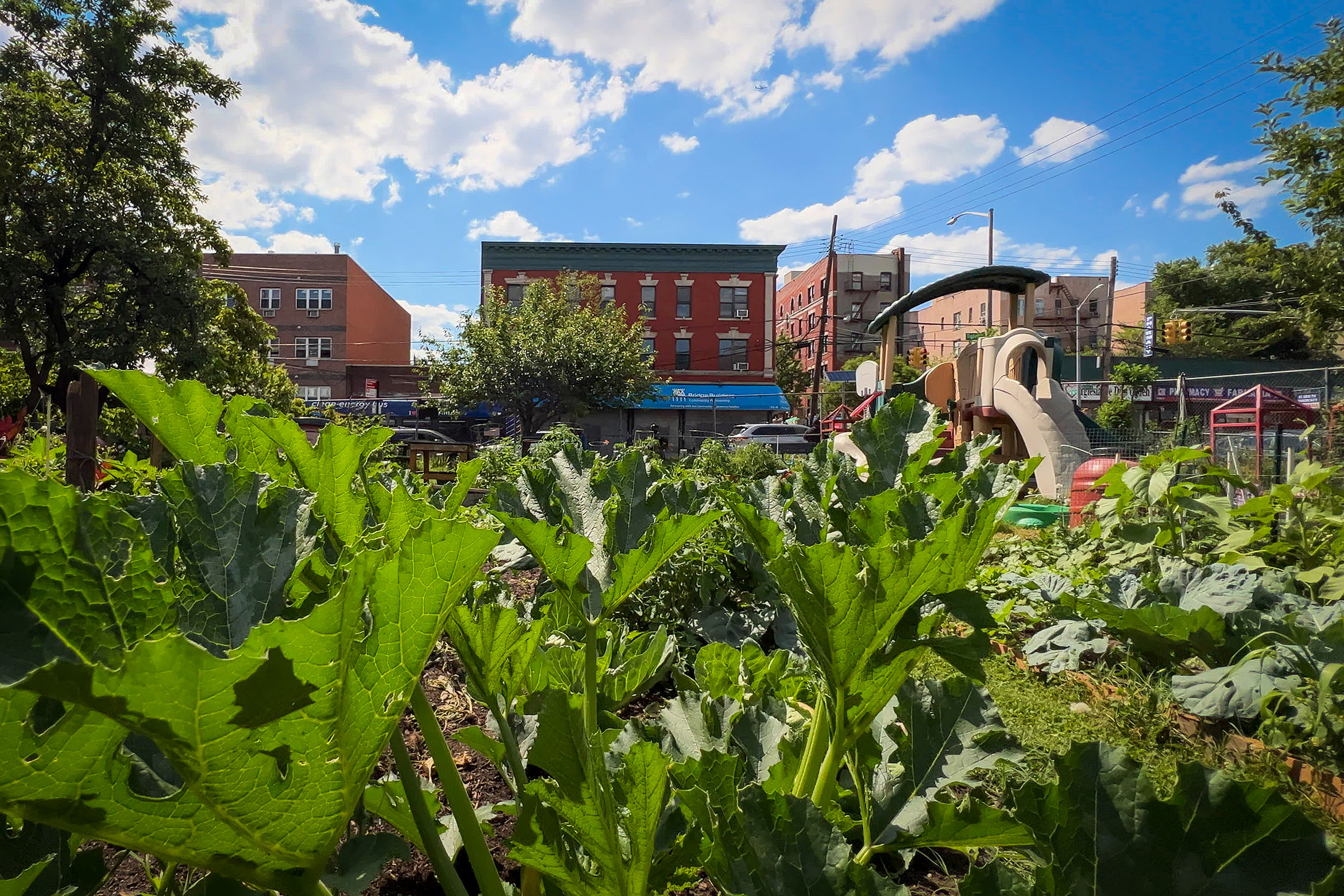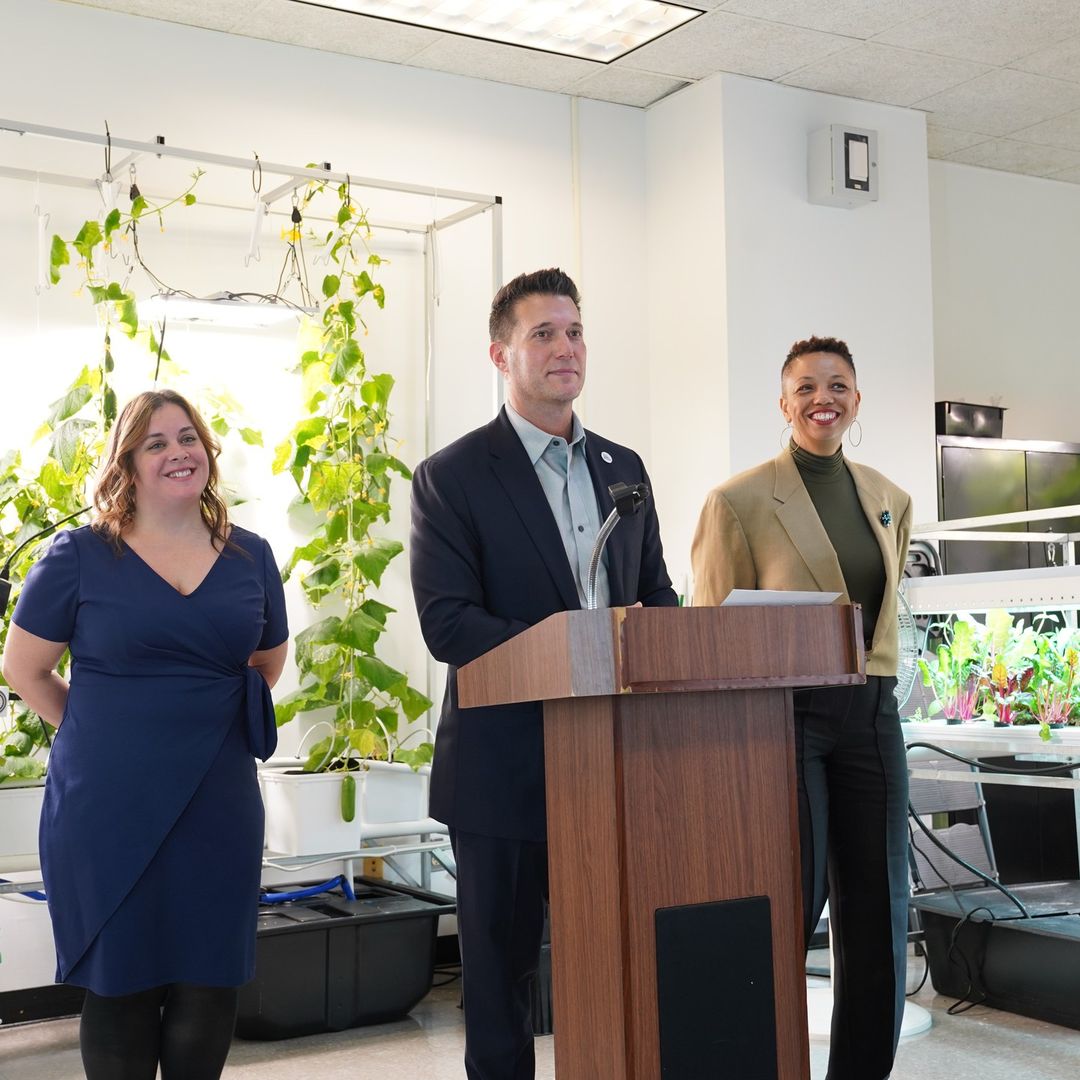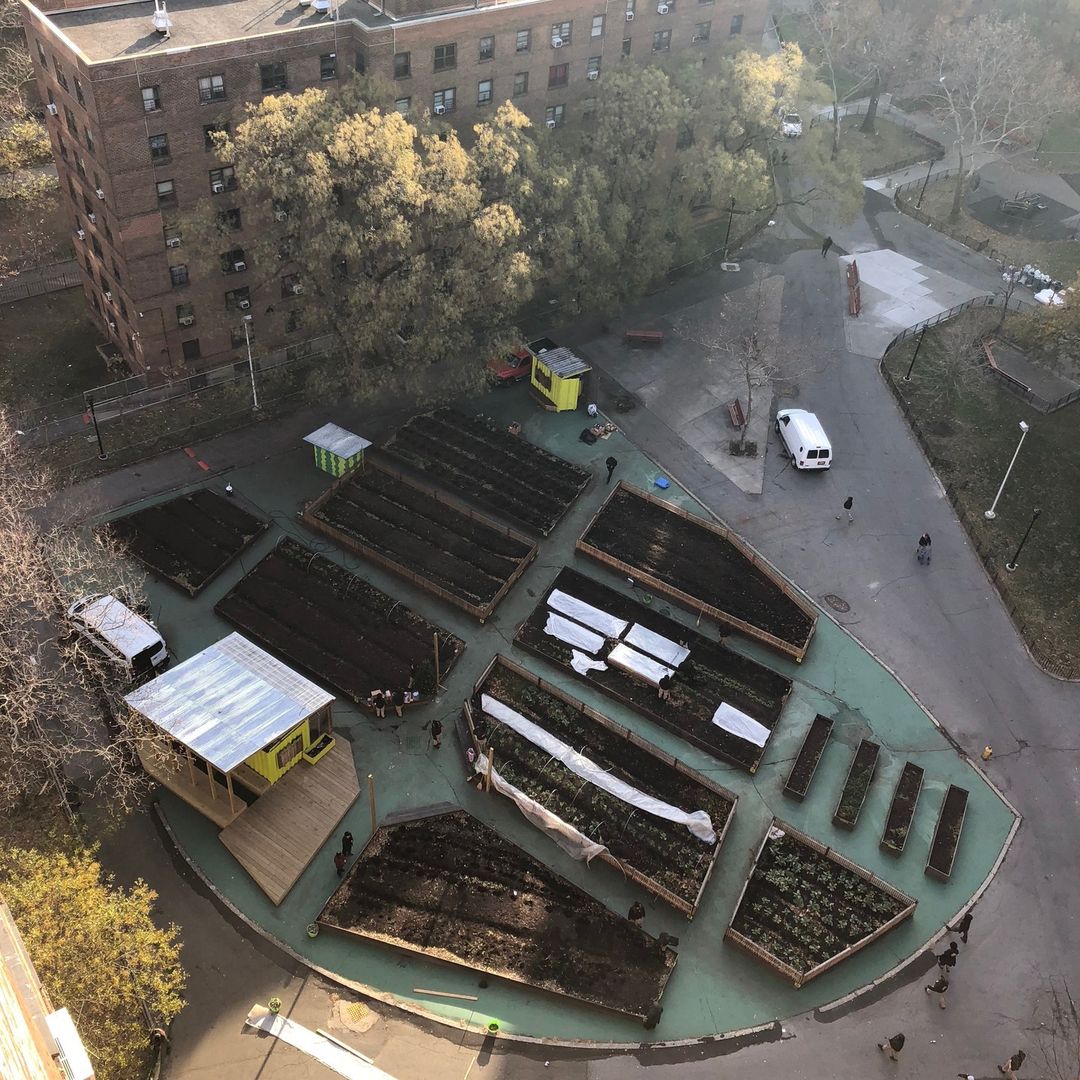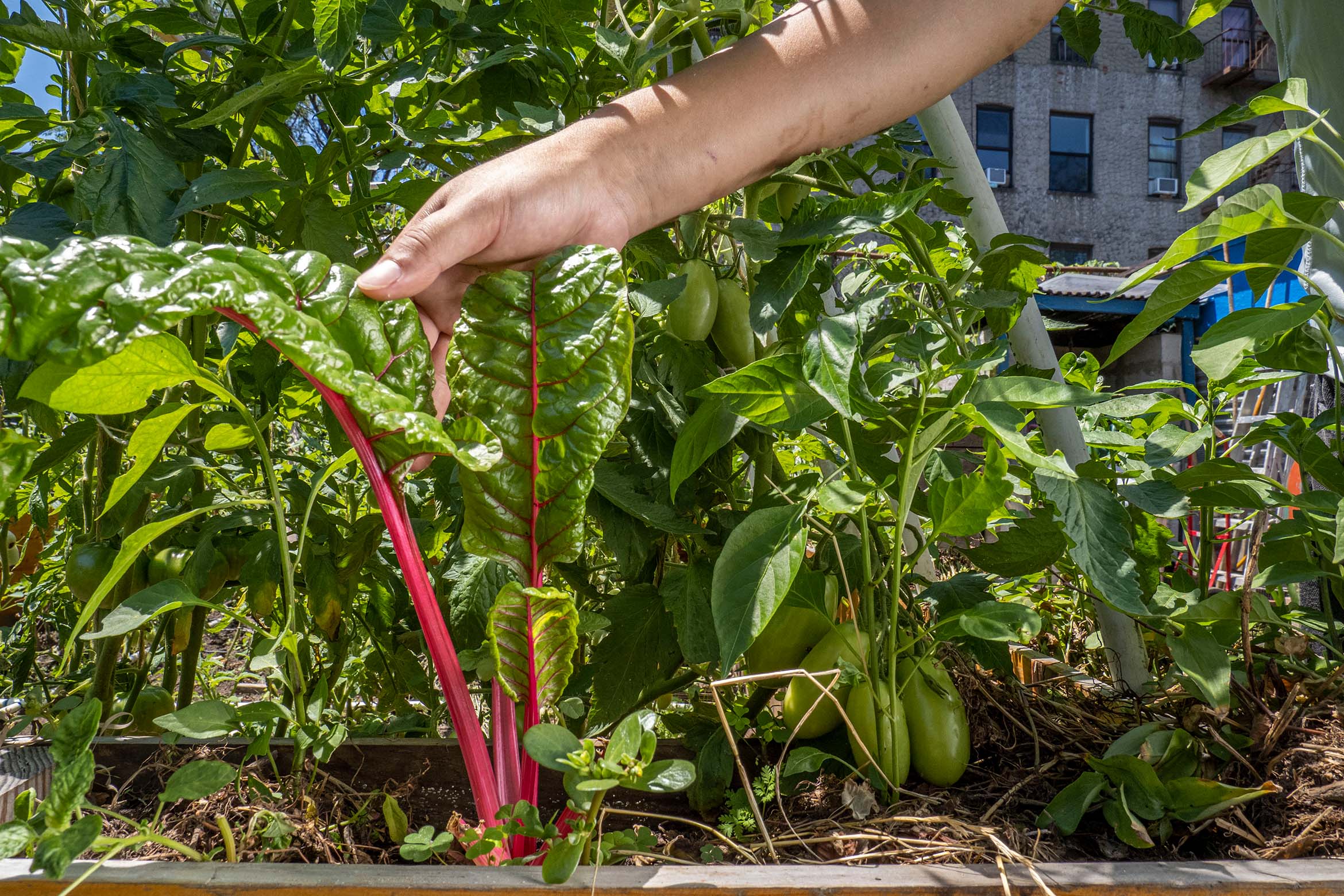
We are celebrating 15 years — and counting — of stories that are deeply researched and deeply felt, that build a historical record of what the city has been.
We are celebrating 15 years — and counting — of stories that are deeply researched and deeply felt, that build a historical record of what the city has been.
Contemporary urban agriculture in New York City has its roots in the community gardens established in empty lots amid the economic disinvestment of the early 1970s. Today, there are over 550 community gardens licensed and supported by NYC Parks’ GreenThumb network growing alongside approximately 900 school gardens, 700 gardens at public housing developments, and another 69 in land trusts. Commercial growers have also burgeoned in the past decade, with rooftop, hydroponic, and greenhouse systems riding the wave of start-ups taking innovative approaches to the agricultural sector. Large and small, community-based and corporate, these practices have specific — and often divergent — needs in terms of the space they require, the land tenure arrangements they rely on, the business development pressures they face, and the climate resilience benefits they offer.
What would it mean for agriculture to be prioritized in the urban fabric? How would it change the power balance of land use in an ever-densifying city? And for that matter, could agriculture be a tool for urban transformation? Qiana Mickie, a native New Yorker with a background in food systems and food justice, is the inaugural Executive Director of a new Mayor’s Office of Urban Agriculture (MOUA), charged with advocating for urban agriculture and supporting cross-cutting policy research and development. We spoke to Mickie about why urban agriculture could be a key to climate resilience, how she’s centering equity in a conversation about food told through land, and her vision for a greener, healthier New York City. – MS
Urban agriculture is such a broad category. How are you defining it in your work?
I wouldn’t say there’s any one prevailing definition. But it is helpful to ground it in the USDA definition, which speaks to the cultivation, processing, and distribution of ag-based products in urban and peri-urban spaces.
What’s actually important is: What is unique about the urban ag landscape in New York City? What are the practices and models that are resilient, that are regenerative, and that our partners and stakeholders are doing? It’s oftentimes around healthy food production, whether that food is grown for sale or given away. It’s also connected to climate resiliency: How can urban agriculture address or mitigate storm water? How does it sink carbon and use that to build nitrogen? How does it help at the end of a food’s lifecycle to minimize food waste? Those are the kind of things that speak to me: from folks gardening on their windowsills and students learning in the classroom, to folks growing in gardens and businesses that are innovating and scaling up that work.
Community gardens sometimes only have a couple of vegetable beds, while the majority of their land is more parklike or recreational. But they seem to capture a lot of those resilience benefits you mentioned. How are you evaluating the benefits of these more-than-food spaces?
The umbrella of urban agriculture needs to also include horticulture. Urban agricultural spaces speak to places of growing, places of healing, places of respite; but they’re also places of infrastructure that can provide support beyond food production.
What makes urban ag especially linked to climate resilience? How is it different than other forms of sustainably managed green space, like parks for example?
To me, what differentiates a green space like a park from a community garden or an urban farm is that there’s more activity and action happening in the latter. What is happening in a raised bed is creating healthy soil through practices of cultivation. There’s intentional work in terms of what’s been seeded, what’s being harvested, how that space is being utilized, who’s utilizing it. Looking through the lens of climate resiliency, a park might have a shelter, equipment, and safety and accessibility measures that allow people to come and go, but it’s still more of a passive space. In urban agriculture, what we see and envision are more vibrant green spaces that are in motion. They’re not only growing, sequestering, and retaining, but also they’re creating a space for active work, bringing in people to steward.
An emerging sector in the urban ag conversation is agriculture technology: practices ranging from hydroponics to indoor growing to other forms of agricultural innovation. What has this sector been telling you, and what challenges do they face?
Innovation in urban ag is not synonymous with just ag tech. There are high- and low-tech innovations in terms of right-scale production and work. But when we’re thinking about indoor work, a lot of that is within the spectrum of growing for scaled food production. Because many of them operate in a for-profit capacity, they’re asking, how can the MOUA support the economic development or sustainability of that sector?
There are some great examples that we’ve seen in mushroom cultivation and mycelium. Many of them are able to go to market with mushrooms that are grown indoors. There’s also a business opportunity: you can be a very large business and do indoor mushroom growing, but you can also be a small-scale business and do it.
I’m encouraged by the opportunity in indoor farming to increase biodiversity, in particular around the growth of culturally relevant foods. Farm.One is a really good example of what we need in the city around zoning for businesses that are still in residential areas, but are bringing commercial activity that is scalable. So folks are able to see and experience urban ag more, whether they’re buying food or going to a workshop. Sometimes, indoor models have to be very enclosed, so it can limit accessibility. But I think innovations in zoning can help find that balance between retail and commercial.
Folks are usually familiar with rooftop farming outfits like Gotham Greens and Brooklyn Grange, which are great. But we’re continuing to see a need to evolve zoning that supports rooftop growing. We are exploring ways that we can bring rooftop vegetable growing together with solar panels, so these different energy outputs are working together.
It sounds like a lot of what you are working on is about co-locating urban ag with other uses, whether that’s residential, or commercial, or industrial. Is this the case? Are you looking at zoning models in other cities?
In order to be a city on the vanguard, you have to look at other cities that are putting great foodstuff concepts in motion. I continue to look at cities like Singapore, Amsterdam, cities in Sweden, for that balance between the indoor and outdoor at a large scale. In New York, because we’re dealing with density, and we have intersecting issues around capital needs, we see the opportunity for this office to not pit those existing pressures or issues against each other.
I like the idea of co-locating. Are we being innovative around using underutilized land or property for urban agriculture? Can this space be used for residential and commercial? We really follow the lead of our partner agencies, like City Planning in their campaign around City of Yes. We want to take what they’ve learned from different stakeholders, but give that additional lens of urban agriculture innovation to find where the city can evolve regulations that don’t compromise what’s already here, but amplify what needs to be here.
MOUA’s first report prioritizes identifying underutilized land throughout the city. Tell me more about the feasibility study you are piloting.
We can start to see underutilized pockets near buildings or ill-sloped lands as vibrant spaces like food forests, bioswales, or more robust rain gardens. We look at indoor spaces as well. How are we working with partners, or stimulating that work around what retrofitting can do, and the breadth of urban agriculture that can happen in that kind of space? Who are the partners that need to be at the table? What science and new businesses might come from that? I think it’s important to always find equity in that work. If we’re creating business opportunities, are we ensuring pathways for emerging businesses? Are we supporting smaller businesses, whether they are well resourced by venture capital or finding other ways of funding?
It goes back to the zoning piece, too. How are we able to bring that lens of equity to a conversation like zoning? How do we bring that to a conversation around regulations, or even things like license agreements, land-use agreements? The majority of community gardeners in New York City are working under free labor or volunteer license agreements — they’re working on land they’re never going to own. So, if the ball just stopped there, then what we would have is what we already have.
We need to take that step back with a feasibility plan and say, “Hey, now that we’re trying to think about innovation in these different ways — factoring in zoning, labor, economic activity — what can we potentially do that has not been seen before?” And right now, what we’ve found is we don’t always have the agreement plans or license agreements to allow that.
Food security feels like it’s at the heart of this conversation. Community gardens are feeding a few people some of the time, but they aren’t necessarily an answer to widespread food insecurity in the city. How does urban ag fit into the conversation around food insecurity?
I think urban agriculture can be a nature-based solution to address food insecurity, which is the scarcity of healthy food that is consistently accessible to communities in need. However, most emergency food security work is reliant on donated food. It’s not necessarily food that’s grown hyper-locally, or that allows for those accepting that food to decide what that food is. I think it is unfair to connect emergency food or existing food security work with urban agriculture, because, historically, those folks do not have the scale to address that need. That is a structural disparity that is going to take multiple properties, land, funding, and resources to address.
That said, if we’re talking about food insecurity within a peri-urban and urban space, I do think urban agriculture is well suited for that. With the resources, funding, and space to do so, there are ways to scale food production that can actually meet the needs of a community. The other important offer is the opportunity for people to grow their own food and decide what kinds of food to grow.
Many people are familiar with pocket gardens, maybe less than half an acre. There are some community gardens that are an acre, if not three to five acres. If we’re trying to address food insecurity in a neighborhood, then we have to also allot land or buildings that are able to grow at that larger scale. We need to provide the agreements for businesses to come in, or people to start businesses. It’s very different to grow for recreation than to grow for business or for food production. One of the things that might be inhibiting us is: Are we really identifying our growing spaces beyond volunteers, and free, sweat-equity space? And, are we offering that to folks beyond just the business ag tech side? Are we exploring underutilized land for multifaceted use?
I think it goes back to unlocking land tenure and security around land use and license agreements to allow a breadth of stakeholders to scale their production, scale their distribution, and scale their processing. That is something I think would actually address food insecurity.
Something that stood out to me from the report was the breadth: you’re including a regional perspective as well as a focus on the city. What do the mandates relating to farmers in New York State look like in practice, and how else are you integrating more of a statewide perspective into a New York City conversation?
There is no vibrant foodshed or watershed without the value, the co-benefits, and the collaboration we need from our regional agricultural sector partners. One concrete way that the office is supporting our regional partners is through increasing opportunities for city-based procurement. Are we increasing access in our community-driven fresh food sites? Are we creating and informing, with our agency partners, new contracts for larger-scale procurement? Are we creating opportunities for our rural partners in terms of solar? We work with the Mayor’s Office of Climate and Environmental Justice to increase the awareness of agriculture and nature-based solutions, as well as to amplify the voices of agriculture partners in our leadership boards and advisory boards. How do we continue to support agriculture being at that table?
How do farm-to-school initiatives dovetail with all of this?
One of the pillars of our work has been trying to reimagine the farm-to-school connection in New York City. The work with our school food partners is really around getting as much healthy, local food from farmers to schools, with a focus on supporting socially disadvantaged and smaller-scale farmers. If we can build a proof of concept there — micro and small procurement contracts, which range from a quarter of a million to half a million dollars — that’s nothing to sneeze at. What I hope this demonstrates to our region, our state, and our city, is the need is there, the demand is there, the supply is there. This can be replicated and scaled to larger procurement contracts like school food. The best way that we can demonstrate that work is by building it first with smaller-scale farmers in order to be able to replicate these systems at scale.
That makes a lot of sense. You’re identifying these pilots almost as a proof of concept before expanding over the next several years.
Exactly. Oftentimes, work around urban ag, or work that’s rooted in food equity, is often seen as ambitious or visionary. I guess maybe it’s nice to be called a visionary, but it can also evoke a lack of pragmatism or feasibility. I wanted to demonstrate that we actually have Year One wins on the initiatives and priorities that we’re outlining, and we’re defining and building a pathway forward, so we can measure and quantify that progress.
You have also been working with the New York City Housing Authority. How are you thinking about the challenges to urban agriculture at NYCHA developments, as well as unique opportunities?
We actively collaborate with the NYCHA team and their effort to advance urban agriculture. Whether it’s bringing in nonprofit partners like Green City Force and cultivating youth leadership training in urban ag on NYCHA property, or if it’s connecting existing NYCHA residents to urban ag training and learning, we are continuing to expand and support them in those efforts. We want to support NYCHA to create new land tenure and license opportunities that can support residents. In the years to come, it would be great to explore how to expand on the growing and composting side to bring NYCHA into a larger circular economy of and by NYCHA residents on their property.
How do you see the built environment, and built environment professionals, playing a role in urban ag initiatives?
One thing that I’m continuing to ask is, “How much more can we infuse urban ag in our built environment, and who are the partners that we need to talk to about that?” Oftentimes, community gardeners will mention to me their ideas around canopy cover or solar at their garden. For instance, in Brownsville, Isabahlia has been trying to work on building pavilions and wants to bring in solar and stormwater retention. There are many facets to urban agriculture beyond just growing. Architects, urban planners, and designers help inform our urban ag landscape so we can see how the city can be adapted to increase access and opportunity. I’d love architects and designers to see themselves in our report, too, and think, “Aha, I know exactly how to build a pilot as such.” Or, “What could really help is a tiered raised bed. . .”
Something that I find inspiring is that you seem very focused on concrete steps and policy tools that can bring real change on the ground over time. What is your vision for future generations growing up in New York? In five or ten years, when these policies have really started to roll out and these initiatives are coming into fruition, what does that look like? What does that feel like?
It would mean urban ag is integrated into the everyday life of a New Yorker, to the point where it is our common action and knowledge. If the average New Yorker felt like they had a direct connection and knew where their food was grown, and how they can grow food, and how to minimize waste; if we truly had increased biodiversity, robust growing spaces, green spaces. Even if people just felt like they could do work that supports a healthier climate within walking distance of their neighborhood, that would be a major step forward. We need people to feel like climate smart solutions aren’t just in the hands of scientists. We need the average New Yorker to feel like they have a handle on, or a part in building a climate resilient city and a climate resilient neighborhood. In my vision, the things we are fighting for now are already in motion.
The views expressed here are those of the authors only and do not reflect the position of The Architectural League of New York.
